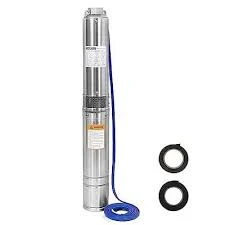Nov . 12, 2024 14:19 Back to list
are submersible pumps safe
Are Submersible Pumps Safe?
Submersible pumps are mechanical devices designed to function underwater, often used in a variety of applications, including drainage, sewage management, and agricultural irrigation. While their utility is unquestionable, the question of safety arises, particularly regarding their design, usage, and the environments in which they operate. This article explores the various factors that contribute to the safety of submersible pumps.
Design Standards and Features
One of the key aspects that enhance the safety of submersible pumps is the stringent design standards they adhere to. Most submersible pumps are engineered to be waterproof and are often equipped with durable materials such as stainless steel or thermoplastic. These materials not only improve the pump’s longevity but also minimize the risk of electric shock or corrosion over time. Furthermore, many pumps come with built-in overload protection mechanisms, which help prevent electrical failures and mitigate hazards associated with overheating.
Electrical Safety
Electrical safety is a paramount concern when it comes to submersible pumps. To reduce the risk of shocks and other electrical hazards, manufacturers typically incorporate several safety features. For instance, many submersible pumps utilize a double-insulation system where electrical components are housed away from direct contact with water. This barrier significantly reduces the chances of electrical hazards in case of a malfunction. Additionally, proper grounding techniques and the use of GFCI (Ground Fault Circuit Interrupter) circuits can enhance safety by cutting off power during electrical faults, thus protecting users from potential shocks.
Application and Environment
are submersible pumps safe

The safety of submersible pumps is also influenced by the application and environment in which they are employed. For instance, pumps used in sewage systems are often exposed to corrosive substances, which can pose greater risks if not properly maintained. Regular inspection and servicing of pumps in these applications are crucial to identify wear and tear or potential failures before they result in dangerous situations.
Another aspect to consider is the surrounding environment. For instance, when working in confined spaces or areas with hazardous materials, it is essential to ensure that the pump is suitable for such conditions. Using pumps that are specifically designed for hazardous environments can greatly enhance safety and efficiency.
User Training and Maintenance
Proper training and awareness of safety protocols is another crucial component in ensuring the safe operation of submersible pumps. Users must be educated on the correct handling, installation, and operation of the pumps to minimize risks. Comprehensive training programs can cover essential topics such as recognizing signs of wear, understanding operational limits, and knowing what to do in case of an emergency.
Regular maintenance checks not only ensure optimal performance but also play a critical role in safety. Users should follow the manufacturer’s guidelines for maintenance schedules, which typically include routine inspections, cleaning, and replacing worn parts. By addressing these aspects regularly, users can help prevent accidents that may arise due to equipment failure.
Conclusion
In conclusion, submersible pumps can be safe when designed, used, and maintained correctly. Their built-in safety features, such as waterproof housing and electrical safeguards, significantly mitigate risks associated with their operation. However, the onus of safety also lies with the users, who must ensure they are properly trained and aware of how to effectively maintain the equipment. By taking these considerations into account, individuals and organizations can enjoy the benefits of submersible pumps while minimizing potential hazards. Whether used in drainage, irrigation, or industrial applications, prioritizing safety will not only protect users but also enhance the efficiency and reliability of submersible pumps.
-
Submersible Water Pump: The Efficient 'Power Pioneer' of the Underwater World
NewsJul.01,2025
-
Submersible Pond Pump: The Hidden Guardian of Water Landscape Ecology
NewsJul.01,2025
-
Stainless Well Pump: A Reliable and Durable Pumping Main Force
NewsJul.01,2025
-
Stainless Steel Submersible Pump: An Efficient and Versatile Tool for Underwater Operations
NewsJul.01,2025
-
Deep Well Submersible Pump: An Efficient 'Sucker' of Groundwater Sources
NewsJul.01,2025
-
Deep Water Well Pump: An Efficient 'Sucker' of Groundwater Sources
NewsJul.01,2025
-
 Submersible Water Pump: The Efficient 'Power Pioneer' of the Underwater WorldIn the field of hydraulic equipment, the Submersible Water Pump has become the core equipment for underwater operations and water resource transportation due to its unique design and excellent performance.Detail
Submersible Water Pump: The Efficient 'Power Pioneer' of the Underwater WorldIn the field of hydraulic equipment, the Submersible Water Pump has become the core equipment for underwater operations and water resource transportation due to its unique design and excellent performance.Detail -
 Submersible Pond Pump: The Hidden Guardian of Water Landscape EcologyIn courtyard landscapes, ecological ponds, and even small-scale water conservancy projects, there is a silent yet indispensable equipment - the Submersible Pond Pump.Detail
Submersible Pond Pump: The Hidden Guardian of Water Landscape EcologyIn courtyard landscapes, ecological ponds, and even small-scale water conservancy projects, there is a silent yet indispensable equipment - the Submersible Pond Pump.Detail -
 Stainless Well Pump: A Reliable and Durable Pumping Main ForceIn the field of water resource transportation, Stainless Well Pump has become the core equipment for various pumping scenarios with its excellent performance and reliable quality.Detail
Stainless Well Pump: A Reliable and Durable Pumping Main ForceIn the field of water resource transportation, Stainless Well Pump has become the core equipment for various pumping scenarios with its excellent performance and reliable quality.Detail
